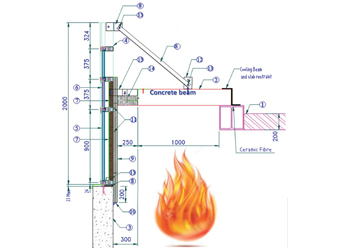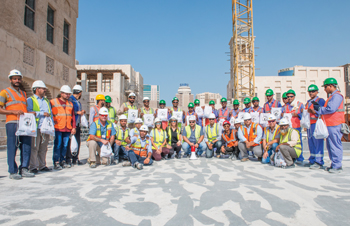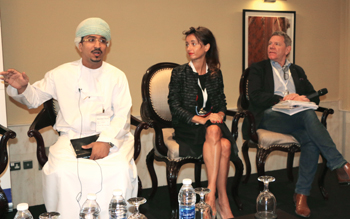
 Almuhrzi (left) speaks at the SDiB conference in Muscat.
Almuhrzi (left) speaks at the SDiB conference in Muscat.
The Safety Design in Buildings (SDiB), a regional campaign that aims to foster regulations on safety in buildings through conferences, will stage its first conference of the year in Riyadh, Saudi Arabia, on April 16, as a partner event of Intersec, a trade fair for security, safety and fire protection.
This will be followed by a similar conference in Jeddah on April 18.
Speakers confirmed for the Riyadh and Jeddah conference include Altaf A Afridi, deputy vice-president marketing, Middle East and Africa, dormakaba; Tom Baines, health, safety, environment and quality director, Arcadis Middle East; Peter van Gorp, head of fire safety, AESG; Ian Roy, head of property risk consulting (Mena), Marsh; John Noone, co-founder - fire engineering, Joule Group; Shamim Rashid-Sumar, vice-president-development - Middle East, Jensen Hughes; Andy Dean, head of facades, WSP; and Craig Ross, partner, head of project and building consultancy, Cavendish Maxwell.
The campaign, which has gained substantial credibility, sees experts in the field talk candidly on issues and devise ways to address them. It also spearheads new regulations through these talks in the host country. Some 35 conferences have taken place to date as far afield as Egypt, and – most recently – Tehran, Iran.
According to Oscar Wendel, SDiB campaign manager, fire safety concerns are relevant to every project when it comes to construction, engineering, and architecture at large. And therefore, educating the industry continuously is important.
“By creating an independent, mutually-inclusive industry platform for experts, our aim is first and foremost education and raising awareness, as opposed to simply selling or punting products and systems,” he tells Gulf Construction.
What the campaign does best is highlight the value of high-quality products and systems, and how opting for the latest innovations and technology is the best-case business scenario possible. Another major attraction for sponsors is the opportunity to rub shoulders with industry experts and specialists and that bolsters mutual communication and understanding, he adds.
“By nurturing such relationships, a network is fostered whereby everyone can call on each other for advice and expert assistance, which ultimately has a dramatic knock-on effect on building safety and quality in the industry,” says Wendel.
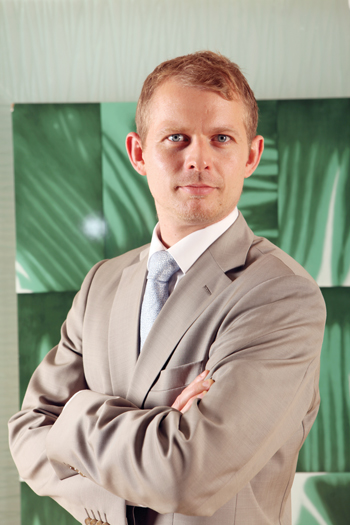 |
|
Wendel ... creating awareness. |
What continues to differentiate SDiB as a campaign is the ongoing, continuous engagement with the industry at large, as opposed to separate, standalone events where presentations are duly delivered and business cards exchanged, he continues.
With a subject as important and complex as fire safety, it is clearly insufficient to deliver a strong message once only; it is critical is keeping this message front and centre at all times, in an all-encompassing approach combining all disciplines, from the initial design through to the engineering and construction phase.
The campaign has managed to develop greatly over the years. Upon its introduction in 2012, many of the views and opinions espoused by fire safety experts were either not understood or not accepted widely. Today these are often echoed and perceived as being mainstream. This speaks about the value of these campaigns.
Wendel says SDiB has been hugely influential in this process of shedding light on what can go wrong, and how these issues can best be addressed.
“You could pull out the presentations that were made five years ago, and see how these were a glimpse into the future. Fire experts are a niche group of professionals. However, they can stand to benefit the industry in general if they can reach out to construction professionals more broadly,” he remarks.
“Everyone who attends our meetings will, at some point in their career, have had to deal with some form of safety regulation. However, the majority of our attendees are not fire safety experts and, therefore, appreciate the opportunity to understand how it affects their own sphere of influence.”
Codes change consistently, just as markets evolve all the time. Therefore the SDiB plays an important role in providing an invaluable snapshot of the prevailing status quo, he adds. It is also a sounding board for testing new ideas and voicing concerns, and an opportunity to introduce new technologies and approaches to enhance building safety.
SDiB in Iran
Wendel says the recent event in Iran was a very interesting development for SDiB. “Iran is a separate market where I believe that there are many learning opportunities. Fire safety regulations there differ from the rest of the Middle East, which is due partly to its architecture and built environment and infrastructure being quite different overall. Nevertheless, it pays attention as to what is happening on the international level and, therefore, we are very pleased to be able to play a role in bringing all of its industry professionals together.”
Furthermore, being late in adopting new technologies presents Iran a good opportunity to learn from the mistakes of others.
SDiB in Oman
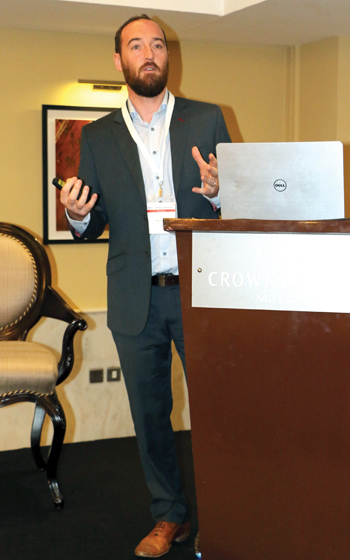 |
|
Noone ... sees BIM role in safety. |
Prior to Tehran, the conference was held in Muscat, Oman, in November 2017. The panellists included Wail Almuhrzi, managing director of Fire Protection Consultants in Oman; John Noone, co-founder – fire engineering, Joule Group; Adrian Brown, fire service advisor, General Directorate of Dubai Civil Defence; Lucia Ortega, senior consultant, Jensen Hughes. The discussion was moderated by Andy Dean, head of facade engineering, WSP.
According to Almuhrzi, a big challenge when it comes to fire safety in buildings in Oman from the Civil Defence’s point of view, is that developers do not consider fire safety until the design has been completed for their projects and the fact that contractors, suppliers and consultants lack awareness about what the Civil Defence does.
“A conference like this helps to update people on Civil Defence requirements and recent updates,” he said.
Almuhrzi is part of a committee that is drawing up Oman’s building codes and working on the development of an updated fire code. Besides Oman, his company is active in Saudi Arabia and Abu Dhabi, and has clients from Iran, Iraq and Kuwait as well.
Commenting on the level of risk on existing buildings and their compliance to safety codes, Brown pointed out there was no ideal system.
Almuhrzi pointed out that finding alternative solutions lowers the risk and it is not easy to replace or change everything in a short period. “We have to change it if we can justify it, but if we can’t then we have to propose an alternative system or offer solutions that would be acceptable to the authorities,” he said.
Commenting on the suggestion of using software for the placement of detectors and sprinklers, Noone said this could be done through plug-ins into the basic building information modelling (BIM) model. So the assessment for trials and occupancies will be a different plug-in for what you would have for compartmentalisation and fire resistance.
“But equally, there is software out there that is fully compatible with BIM in terms of their strength of design and fire alarm design. That is designed with the BIM model for extracting or extruding, to form submissions to a local authority,” he says.
Adding to that Brown indicated that the UAE Federal Civil Defence has a program that enables it to inspect a 30-storey hospital building in a reasonable length of time despite its limited resources. Here the entire construction process needs to be videoed and this 360-degree footage with integrated hotspot identification is linked to the BIM model to facilitate inspection.
Another issue that he highlighted was the lack of access for the Civil Defence in high-rises. “I can see that in the future …ultra-high-rise buildings will become more project and performance-based. Some people will say it’s over-engineered in the fire-protection and passive fire systems, but from an operational point of view, with high-rise buildings, it’s all about superior response,” he said.








.jpg)




.jpg)




























.jpg)

































